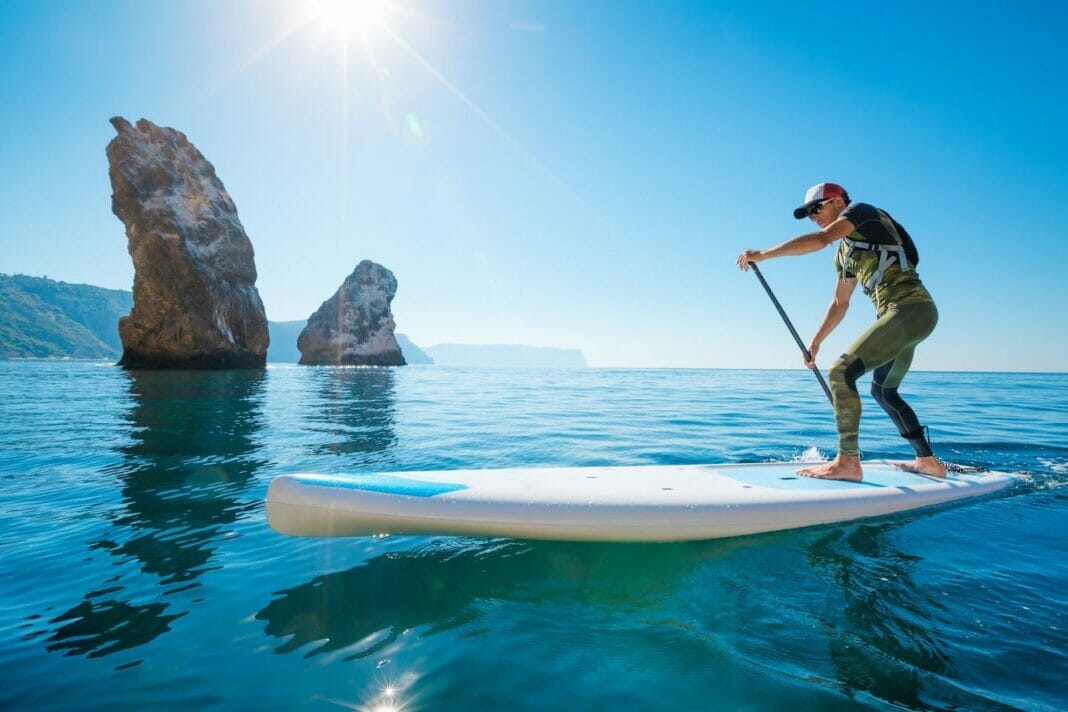Paddle Boarding (SUP)
Standup paddle boarding (SUP) is an increasingly popular water sport that originated from surfing. With its combination of exercise, relaxation, and opportunity to connect with nature, it appeals to a wide range of people. This beginner’s guide to standup paddle boarding will take you through selecting the right equipment, basic techniques, and essential safety tips to set you on the path to becoming a competent SUP enthusiast.
Choosing The Right Equipment
For a successful SUP experience, choosing the right equipment is crucial.
Paddle Boards
A variety of paddleboards are available, each with its specific characteristics. For beginners, it’s best to start with an all-around or inflatable board, which offers more stability and can be easily transported.
Paddles
Selecting the correct paddle length is essential. To find the right length, stand the paddle vertically with the handle on the ground, and ensure that your wrist can comfortably reach over the top of the handle. Paddles come in various materials such as aluminum, fiberglass, or carbon fiber, each with its unique features and price points.
Personal Floatation Device (PFD)
A PFD is crucial for every SUP paddler, regardless of experience. It’s essential to choose a PFD that fits comfortably, doesn’t impede movement, and can support your weight.
Leash and Other Accessories
A leash will keep your paddleboard close to you, ensuring it doesn’t drift away in case you fall in the water. Also, remember to wear appropriate clothing, like a wetsuit or rash guard depending on the weather, and apply sunscreen, wear sunglasses, and a hat for sun protection.
Basic Techniques for Success
Getting Started
Start by placing the paddleboard in shallow water, with the fin(s) free from obstruction. Stand next to the board, holding the paddle with one hand while gripping the rail of the board with the other. Gently place your knees on the board, one at a time, before standing up in a centered position.
How to Paddle
The proper paddle technique involves gripping the paddle with both hands, with the upper hand on the handle and the lower hand about a shoulder-width from the top hand. Dip the paddle into the water by bending from the hips, then pull it toward your body in a straight line, exiting the water just past your feet.
For a stronger stroke, engage your core and rotate your torso, which will also help maintain balance on the board.
Balancing on the Board
At the beginning of your SUP adventure, you may find maintaining balance challenging. Keep your knees slightly bent, with your feet about hip-width apart and parallel to the board’s rails. Focus on a steady rhythm while paddling.
Turning and Navigation
Different turning techniques include the forward sweep, reverse sweep, and pivot turn. The forward sweep involves reaching the front and pulling the paddle towards the tail. The reverse sweep is opposite, reaching to the tail while pushing the paddle towards the nose. Pivot turns involve shifting your weight to the tail of the board while paddling on one side.
Safety Tips
Some key safety tips for SUP include:
- Always check weather conditions before heading out
- Avoid crowded waterways or areas with motorized traffic
- Never paddle alone
- Take a phone, whistle, or other means of communication for emergencies
Tips for Paddle Boarding with Children
When paddleboarding with children, ensure their equipment is appropriately sized, and they wear a PFD. To help them acclimate to the sport, practice on land or in shallow water. Offer guidance but allow them to gain confidence and independence as they learn.
Conclusion
Standup paddleboarding is an excellent recreational activity, combining physical fitness with the potential for relaxation out on the water. By selecting the right equipment, learning basic techniques, and adhering to essential safety tips, beginners can quickly master the sport. With practice and patience, you’ll soon be reaping the rewards of this fantastic pastime.


